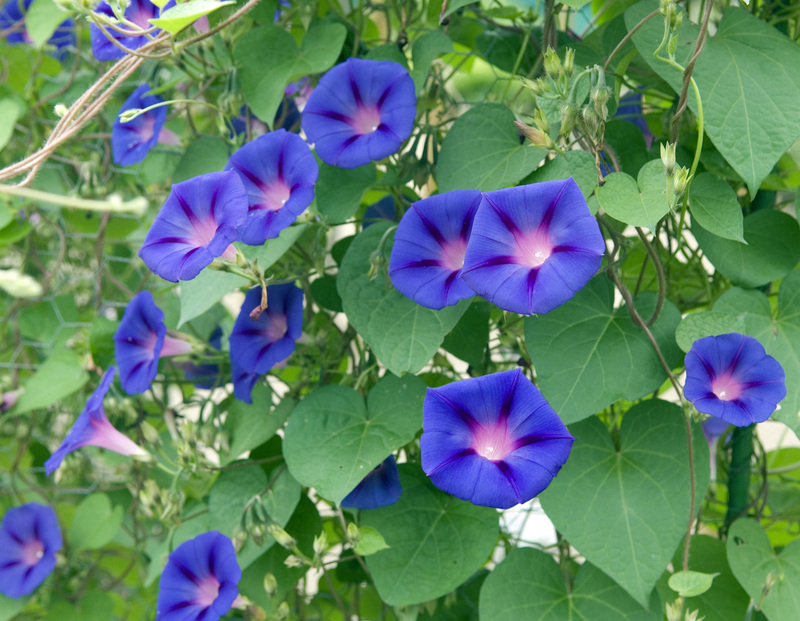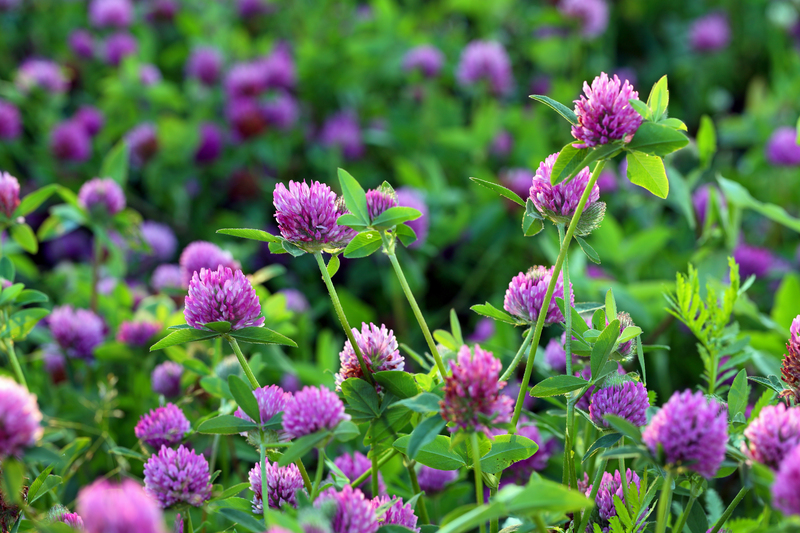Turning Refuse into Rich Soil
Posted on 26/05/2025
Turning Refuse into Rich Soil: A Comprehensive Guide
Waste is a growing problem for urban and rural communities alike. Each year, millions of tons of organic refuse end up in landfills, releasing harmful greenhouse gases and depleting valuable resources. However, with innovative approaches and a little know-how, turning refuse into rich soil is easier--and more beneficial--than ever before. This article will guide you through the process of transforming organic waste into nutrient-dense compost, exploring its environmental and economic advantages and providing practical tips for beginners and advanced composters alike.

Understanding the Value of Organic Refuse
Before diving into the process of converting refuse into fertile soil, it's vital to understand why organic waste matters. Organic refuse includes kitchen scraps, yard trimmings, coffee grounds, and even paper products. Instead of allowing these to rot in landfills, we can repurpose them as valuable resources for enriching soil, improving plant health, and reducing our carbon footprint.
- Reduces landfill waste
- Minimizes methane emissions
- Replenishes soil nutrients
- Fosters sustainable food systems
- Encourages mindful consumption
The Science Behind Turning Waste into Soil
Turning refuse into fertile earth is a natural process called composting. Microorganisms--including bacteria, fungi, and insects--break down organic matter in the presence of oxygen, resulting in rich, dark, crumbly humus that can be returned to the soil. The conditions must be right: proper moisture, oxygen, and a balanced diet of carbon (browns) and nitrogen (greens).
Here's a simple breakdown:
- Carbon (browns): Dried leaves, straw, cardboard, paper
- Nitrogen (greens): Food scraps, coffee grounds, green grass clippings
Best Practices for Composting: From Waste to Wonderful
1. Choosing the Right Composting Method
Not all composting strategies are created equal. Depending on your space, lifestyle, and available materials, you can select the method that meets your needs for turning waste into rich soil:
- Backyard Composting: Ideal for those with gardens; uses bins, piles, or tumblers.
- Vermicomposting: Utilizes worms, perfect for small spaces and indoor composting.
- Bokashi Composting: An anaerobic (low oxygen) method that ferments waste for later soil integration.
- Community Composting: Accessible for apartment dwellers; often provided by local organizations.
2. Building Your Compost Pile or Bin
Regardless of method, a successful compost heap requires a balance of ingredients and attention to detail.
- Location: Choose a well-drained, or semi-shaded spot.
- Layering: Alternate between layers of *greens* and *browns*.
- Moisture: The pile should be as damp as a wrung-out sponge.
- Turning: Mix or aerate regularly to provide oxygen--crucial for decomposition.
- Patience: Composting may take a few months, depending on conditions.
3. What to Compost (And What to Avoid)
Knowing the best materials for your bin ensures a safe, efficient transformation of refuse into healthy humus.
Excellent Materials for Compost:- Fruit and vegetable peels
- Coffee grounds and paper filters
- Eggshells
- Tea bags (non-plastic)
- Yard waste: grass clippings, leaves
- Shredded newspaper and cardboard
- Wood chips (in moderation)
- Dairy, meat, and fish scraps (attract pests, smell)
- Oily foods and fats
- Diseased plant material
- Pet waste (may carry pathogens)
- Invasive weeds or seeds
- Glossy or treated papers
Turning Your Compost into Fertile Gold
When Is Compost Ready?
Properly broken-down compost will be dark, crumbly, and have an earthy aroma. You shouldn't be able to distinguish any original materials. This is the perfect moment to apply your nutrient-rich soil amendment to gardens, lawns, trees, or potted plants!
How to Use Your Finished Compost
- Topdressing: Sprinkle a thin layer over lawns and around vegetable plants.
- Soil Mixing: Blend compost into potting mixes for indoor or raised bed plants.
- Mulching: Use as mulch to retain soil moisture and suppress weeds around perennials and shrubs.
- Tree and Shrub Amendment: Add compost to the drip line of trees and shrubs to feed roots.
Benefits of Converting Refuse to Soil
Embracing the transformation of refuse into fertile soil has numerous positive impacts, both on a local and global scale:
- Reduces landfill usage and lowers waste management costs
- Minimizes greenhouse gas emissions, especially methane
- Naturally fertilizes gardens and crops, reducing reliance on chemical products
- Improves soil structure, water retention, and erosion resistance
- Enhances plant growth and resilience
- Educates communities on sustainable living and environmental responsibility
Economic Incentives for Households and Communities
Too often, throwing food and yard waste into the trash is seen as "free" or just the easy option. However, turning organic waste into healthy soil yields savings that add up:
- Reduces need for store-bought fertilizers
- Lowers garbage disposal costs
- Boosts community gardens and local food production
- Creates potential revenue from compost sales
- Builds greener, cleaner, more desirable neighborhoods
Common Composting Pitfalls (And How to Avoid Them)
1. Odors and Pests
Problem: Strong smells or unwanted animal intruders.
Solution: Balance your greens and browns--too many greens lead to odors. Cover food scraps with leaves or sawdust, and ensure adequate aeration. Avoid composting animal products.
2. Slow Decomposition
Problem: Pile not breaking down as expected.
Solution: Chop larger items, maintain moisture, and turn regularly. If it's cold, consider an insulated bin.
3. Finished Compost Too Wet or Too Dry
Problem: Compost is either soggy or too crumbly with unprocessed materials.
Solution: Add browns (dry leaves, cardboard) to wet bins, and greens or a little water to dry piles. Cover bins during rain to avoid oversaturation.
Innovative & Large-Scale Approaches
On the community and municipal levels, converting refuse to rich soil can be scaled up for big impact:
- Curbside Compost Pickup: Some cities provide bins for organic refuse collection and return finished compost to residents or farms.
- Commercial Composting Facilities: Handle tons of food and yard waste, keeping them out of landfills and creating bulk soil for landscaping or agriculture.
- Permaculture and Regenerative Agriculture: Farms utilize every available organic input to feed the soil, reducing dependence on chemicals.
Success Stories: Communities Leading the Way
- San Francisco: Diverts over 650 tons of compostables daily, reducing landfill usage and producing soil for Bay Area farms.
- Toronto: Pioneered city-wide green bin program, yielding rich topsoil for municipal parks and gardens.
- Freiburg, Germany: Small-scale residential composting, education programs, and nutrient cycling boost sustainability efforts.
Getting Started: Your First Steps Toward Healthier Soil
You don't need a big backyard or specialized equipment to start transforming kitchen refuse into compost. Here's how to begin, no matter where you live:
- Collect Kitchen Scraps: Set a small bin on your counter and empty into a larger outdoor or balcony container.
- Balance Greens and Browns: For every bowl of food scraps, add a handful of dried leaves or shredded paper.
- Aerate Your Pile: Stir or turn once a week to keep decomposition working smoothly.
- Watch, Wait, and Learn: Adjust your bin based on smell, texture, or season. Composting is part art, part science.

Frequently Asked Questions
How long does turning refuse into soil take?
Depending on your method and climate, *compost* can be ready in as little as 2-3 months or as long as a year. Hot composting, which requires periodic turning and monitoring, speeds up the process, while passive composting requires less maintenance but takes longer.
Is home composting safe for growing food?
Yes! Properly composted waste is safe for food gardens; just avoid adding diseased plants or pet waste. Make sure compost is fully broken down before applying to edible plants.
My apartment doesn't have outdoor space. Can I still compost?
Absolutely. Vermicomposting with worms is ideal for small apartments and produces virtually no odors when managed correctly. Many cities also offer curbside pickup or community drop-off programs.
The Big Picture: From Waste to Wellness
Turning refuse into rich, fertile soil is more than just a gardening technique--it's a way of participating in the natural cycle of life. By embracing composting and organic waste management, individuals and communities benefit environmentally, economically, and socially. We safeguard our planet, replenish our soils, and foster a vibrant, thriving ecosystem for generations to come.
Whether you're a homeowner, apartment-dweller, farmer, or city official, there's a place for you in the transformation of waste into wellness. Start small, learn as you go, and watch your efforts blossom into a greener planet and more abundant harvests.
Your Next Steps
- Commit to separating organic refuse at home.
- Choose a composting method that fits your lifestyle.
- Share your success and knowledge with friends, family, and neighbors.
- Support policies and businesses that prioritize waste reduction and soil health.
In summary: Turning refuse into rich soil transforms waste into a resource, restores soils, and paves the way toward a sustainable future. With each kitchen scrap or pile of leaves returned to the earth, you're taking tangible steps to improve food production, environmental health, and community resilience. Start your composting journey today--and help the world bloom.

